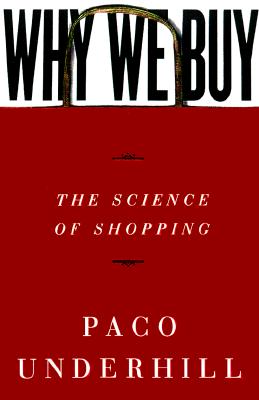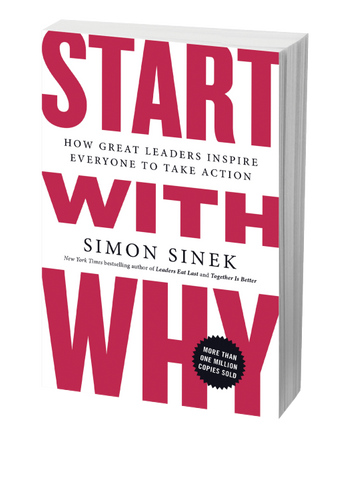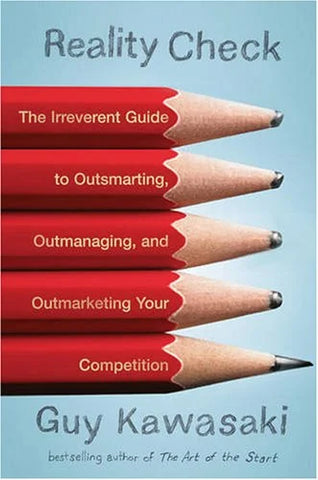Whenever you read a good book, somewhere in the world a door opens to allow in more light. —Vera Nazarian
Reading is an endeavor every entrepreneur—particularly those who sell products in person—should undertake on a regular basis. Adding to your base of knowledge and honing your skills not only broadens your horizons, it can also help you run your business more effectively and efficiently.
In the ever-evolving world of retail, no one has the luxury of standing still. Professional development is key to shedding light on new techniques and technologies, keeping up with trends, and understanding where the industry is headed.
But as a stretched-thin entrepreneur, you only have so much time between your day-to-day tasks to dedicate to this kind of reading. And searching for the best retail management books is a task on its own. So, if you’re going to crack open a book, your best bet is to spend time between the lines of a high-impact read that offers you some valuable insights.
Based on current bestsellers and some long-standing industry favorites, we’ve rounded up some of the best retail management books to add to your to-read list (in no particular order).
11 best retail management books
- Resurrecting Retail: The Future of Business in a Post-Pandemic World, by Doug Stephens
- Remarkable Retail: How to Win & Keep Customers in the Age of Digital Disruption, by Steve Dennis
- Reengineering Retail: The Future of Selling in a Post-Digital World, by Doug Stephens
- Why We Buy: The Science of Shopping—Updated and Revised for the Internet, the Global Consumer, and Beyond, by Paco Underhill
- Delivering Happiness: A Path to Profits, Passion, and Purpose, by Tony Hsieh
- The Design of Everyday Things, by Don Norman
- How to Win Friends and Influence People, by Dale Carnegie
- Start with Why: How Great Leaders Inspire Everyone to Take Action, by Simon Sinek
- Reality Check: The Irreverent Guide to Outsmarting, Outmanaging, and Outmarketing Your Competition, by Guy Kawasaki
- Buyology: Truth and Lies About Why We Buy, by Martin Lindstrom
- The Paradox of Choice: Why More Is Less, by Barry Schwartz
1. Resurrecting Retail: The Future of Business in a Post-Pandemic World, by Doug Stephens

In modern history, few crises have entirely disrupted all aspects of our daily life to the degree of the COVID-19 pandemic. Every industry, market, and product category was impacted, and the retail industry came to a complete halt for the first time in recorded history.
Resurrecting Retail is not just a story of the unprecedented crash of the retail industry during the pandemic, it’s a roadmap for its rebirth. Thanks to real-time research during the crisis, this book gives you a detailed and surprising vision of how COVID-19 will reshape every aspect of consumer life, including the very essence of why we shop.
You’ll enjoy Resurrecting Retail if you’re looking for actionable ideas to not only survive but thrive in a very different looking post-pandemic retail world.
2. Remarkable Retail: How to Win & Keep Customers in the Age of Digital Disruption, by Steve Dennis

As Remarkable Retail author Steve Dennis puts it, “Physical retail isn’t dead. Boring retail is.”
Are you looking to create big buzz around your in-store experience? This retail management book equips you with eight essential strategies to deliver a powerful customer experience. Despite the headlines you’ve seen about the warning of the “retail apocalypse,” many retailers are growing steadily. But some risk becoming obsolete because they don’t know how to stay competitive. In this book, Dennis, a retail industry thought leader, argues you can no longer count on scarcity to drive sales or provide basic in-store experiences. Nowadays, customers live online and have a wealth of choices and information at their fingertips.
In Remarkable Retail, Dennis covers the trends that traditional retailers need to adopt, and shares eight essential strategies for future retail leaders. Reading it can help you reimagine the customer experience in the age of digital disruption, so you can make sure your business is digital first, human centered, connected across channels, and memorable enough that your customers keep coming back for more.
3. Reengineering Retail: The Future of Selling in a Post-Digital World, by Doug Stephens

Change in the global retail landscape has accelerated beyond the boldest forecasts made in Doug Stephens’ first book, The Retail Revival. Online giants like Amazon and Alibaba are still growing rapidly, and because many large and small brick-and-mortar retailers have struggled to understand the shifting needs and expectations of modern consumers, they’ve had to close their doors.
Stephens’ second book, Reengineering Retail explores the future of the global retail industry and consumer goods market, offering you a sales and marketing roadmap to the future.
Read it for real world examples and interviews with industry disruptors, and to learn how you can effectively run your retail business, now and into the future.
4. Why We Buy: The Science of Shopping—Updated and Revised for the Internet, the Global Consumer, and Beyond, by Paco Underhill

The new Why We Buy is a guide on how to keep your evolving customers and entice new ones to shop from your retail business.
It includes information about the latest trends in retailing online, including what big companies like Amazon are doing right and wrong, and how most large internet retailers can improve customer service.
You’ll also learn about the most innovative stores, malls, and brick-and-mortar retail environments around the world—most of which are springing up in recently prosperous countries. For example, an indoor ski slope attracts shoppers to a mall in Dubai, a luxury department store in São Paulo provides personal shoppers to its customers, and in South Africa a mall has a wave pool for surfing.
📚Further reading: Experiential Retail: 6 Ideas To Drive Foot Traffic (2022)
5. Delivering Happiness: A Path to Profits, Passion, and Purpose, by Tony Hsieh

Online shoe retailer Zappos has long been lauded for its positive company culture and commitment to high standards of customer service. In Delivering Happiness, Zappos founder Tony Hsieh discusses his motivation to improve the lives of his employees, customers, vendors, and investors, using anecdotes from his own experiences.
In addition to running through Zappos’ core values and offering a deeper understanding of what has helped make the retailer successful, Hsieh also offers practical takeaways and actionable insights for other retailers and entrepreneurs who hope to duplicate these accomplishments.
6. The Design of Everyday Things, by Don Norman

Bloomberg Businessweek named Don Norman one of the “world’s most influential designers,” and the author has poured many of his insights about industrial design into this tiny tome.
Poor product design can make even the most intelligent among us feel inept. When we fumble while figuring out which light switch or oven burner to turn on, or whether to push, pull, or slide a door, the fault doesn’t lie with our ineptitude but, in fact, with poor design. Don Norman’sThe Design of Everyday Things tackles the topic such as designs that ignore user experience and principles of cognitive psychology. The problems he highlights range from ambiguous and hidden controls to arbitrary relationships between controls and functions, coupled with a lack of feedback or other assistance and unreasonable demands on memorization. The Design of Everyday Things shows that good, usable design is possible, and reminds us to keep design and users in mind when creating products.
7. How to Win Friends and Influence People, by Dale Carnegie

How to Win Friends and Influence People is not specific to retail management, but it’s one of the most well-known motivational guides in history. Its theories can be applied to managing your retail business and staff, winning customers, and more.
You can learn how to:
- Communicate effectively
- Make people like you
- Increase your ability to get things done
- Get others to see your side
- Become a more effective leader
- Successfully navigate almost any social situation
8. Start with Why: How Great Leaders Inspire Everyone to Take Action, by Simon Sinek

People like Martin Luther King Jr., Steve Jobs, and the Wright brothers didn’t have much in common, but they all started with why. They realized people won’t truly buy into a product, service, movement, or idea until they understand the why behind it.
Start with Why is another book that’s not specific to retail management, but it can teach you to uncover and better explain the why behind your business, which can help you in many facets of growing a successful retail business. For example, acquiring new customers through marketing campaigns, getting your staff on board with new processes, and telling the story about why you create or sell specific products.
Start with Why asks and answers questions like:
- Why are some organizations and people more innovative, profitable, and influential than others?
- Why do some have greater customer and employee loyalty?
- Why are so few able to repeat their success over and over?
9. Reality Check: The Irreverent Guide to Outsmarting, Outmanaging, and Outmarketing Your Competition, by Guy Kawasaki

Any list of entrepreneurial reads would be remiss if it didn’t include one of Guy Kawasaki’s fantastic volumes. Not only is the latest edition of Reality Check full of great insights from a renowned Silicon Valley leader, but you’ll also find yourself regularly chuckling as you eagerly turn the page. Irreverent to the core, this renowned innovator has poured many insights from his quarter century of success as an entrepreneur, evangelist, venture capitalist, and all-around guru into more than a dozen books. And Reality Check is no exception.
In his book, Kawasaki provides an all-in-one guide for starting and operating great organizations that stand the test of time and ignore passing fads in business theory. His book collects, updates, and expands the best entries from his popular blog and features his inimitable take on everything from effective emailing to sucking up to preventing “bozo explosions.”
10. Buyology: Truth and Lies About Why We Buy, by Martin Lindstrom

How much do we know about why we buy? What truly influences our buying decisions in a world so full of white noise? Is it that eye-grabbing advertisement, a catchy slogan, or an infectious jingle? Or do our buying decisions take place below the surface, within our subconscious minds?
In Buyology, Dutch author Martin Lindstrom explores and attempts to discover what triggers consumer buying behavior.
Lindstrom, who was voted one of Time magazine’s most influential people of 2009, crawls inside the head of consumers as he presents his findings from a groundbreaking three-year, $7-million neuromarketing study. This cutting-edge experiment peered inside the brains of 2,000 volunteers from all around the world as they encountered various ads, logos, commercials, brands, and products. For those retailers who are interested in the psychology of what sells, this is definitely a must-read reference.
11. The Paradox of Choice: Why More Is Less, by Barry Schwartz

Whether we’re buying a pair of jeans, ordering a cup of coffee, selecting a long-distance carrier, applying to college, choosing a doctor, or setting up a retirement plan, everyday decisions—both big and small—have become increasingly complex, due to the overwhelming abundance of choice with which we are presented.
As such, many consumers now suffer from choice overload. The inundation of options sets many of us up for unrealistic expectations before we even make a decision. Additional symptoms include anxiety, ongoing stress, feeling paralyzed, and an inability to make a decision. In The Paradox of Choice, author Barry Schwartz highlights the point at which choice—which is hailed as the hallmark of individual freedom and self-determination we so cherish—becomes detrimental to our psychological and emotional well-being.
Throughout the course of this accessible read, Schwartz shows how the dramatic explosion in choice—from the flood of daily mundane decisions to the deeply profound challenges of balancing career, family, and individual needs—has paradoxically become a problem instead of a solution. Schwartz also shows how our obsession with choice encourages us to seek that which makes us feel worse, supporting the argument that retailers can help consumers grappling to choose by offering a highly curated selection of products.
Moving forward with the best retail management books
Whether you read all or just a few of these books, hopefully, you’ll be inspired to implement the ideas and strategies in your retail business. Have you read some already? Let us know your thoughts in the comments below! Or share your favorite retail management books instead.
This post was originally written by Lindsey Peacock and has been updated by Alexis Damen.
Read more
- What is Visual Search: How Retailers Can Use it to Enhance the Customer Experience
- Retailers Who Are Nailing Facebook Live (And How You Can Too)
- How to Get Started with Google Places for Business
- Back-to-School Marketing: A Quickstart Guide for Businesses in the Industry
- How to Build a Brand Story for Your Retail Store in 2024
- The 8 Best Podcasts for On-the-Go Retail Entrepreneurs
- How to Make Your Product Copy More Persuasive
- Social Listening: Tools Retailers Can Use to Monitor Online Chatter
- A/B Testing: How Retailers Can Optimize Their Sales With Experimentation
Best retail management books FAQ
What is the most important aspect of retail management?
In retail management, it’s most important to make it easy for customers to find your products online and in-store, and develop processes to keep employees and customers satisfied.
What are the four pillars of retail management?
The four Ps—product, price, place, and promotion—are the pillars of managing a successful retail business.
- Product. You need products that your customers want to buy, and you need to sell them at a price that you’ll profit from.
- Price. Your product pricing must be consistent, at the right level for your target customers, and it should align with the value people can gain by purchasing your products.
- Place. It’s important to sell your products where your customers are and to make it a seamless experience, whether they’re online or in-store.
- Promotion. Now that you have the right products for the right price, and you’ve set up sales channels, it’s time to promote your business.
What are the three most critical issues in retailing?
- Delivering an outstanding customer experience.
- Unifying all sales channels.
- Training staff and offering growth opportunities.





